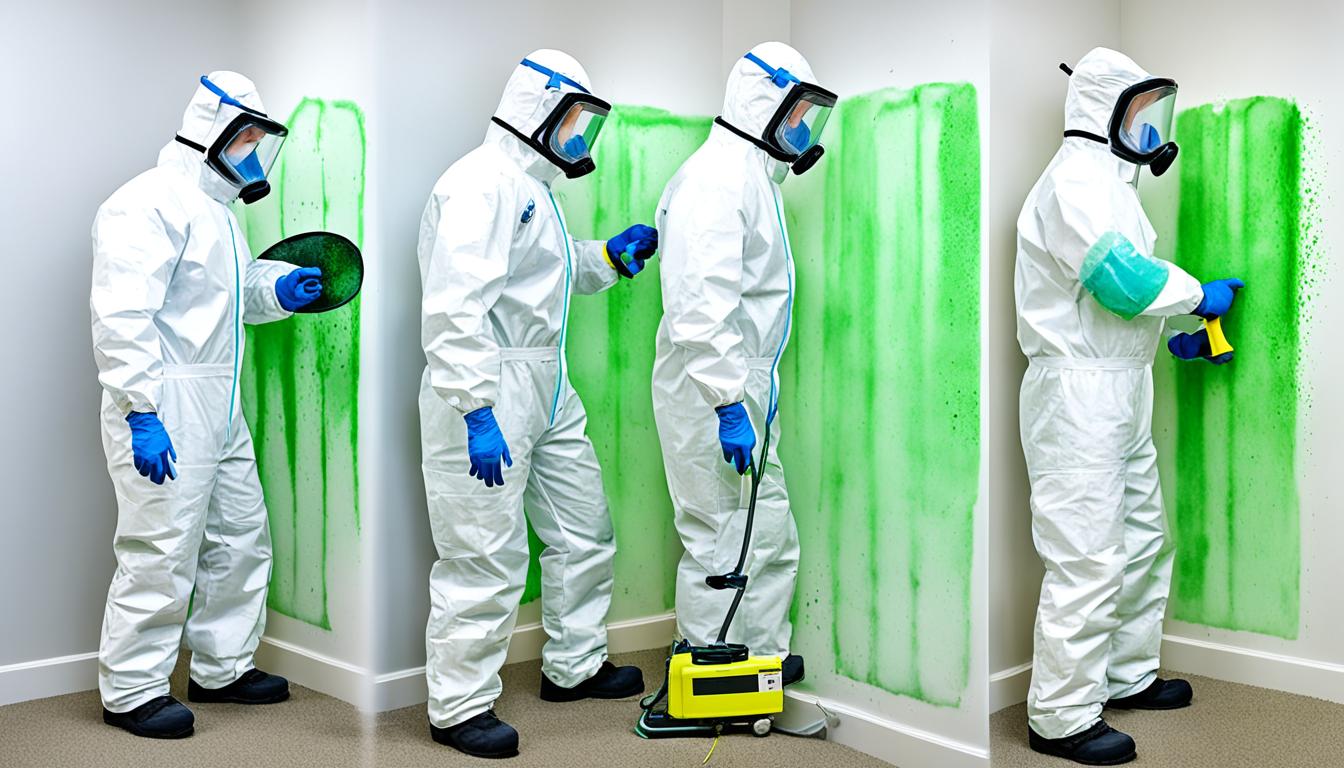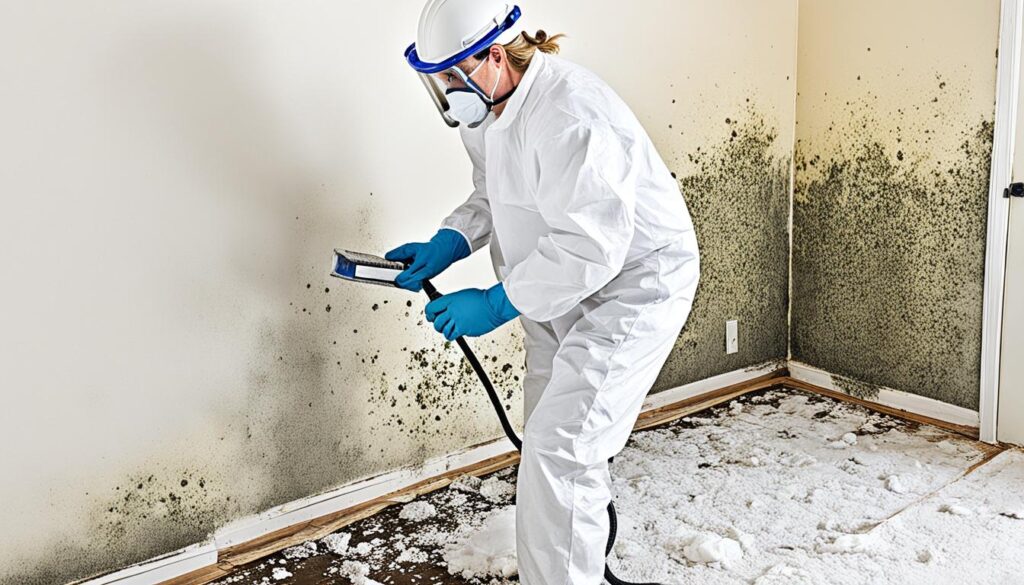
Mold Abatement Process: Safe Removal Steps
Welcome to the Fix Mold Miami blog, your trusted source for mold assessments, prevention, and remediation services in Florida. In this article, we will guide you through the mold abatement process, focusing on safe removal steps that will help create a healthier living environment for you and your loved ones. Dealing with mold issues can be challenging, but with the right knowledge and techniques, you can effectively address and prevent mold growth in your home.
At Fix Mold Miami, we understand the importance of a safe and mold-free living space. Our team of experts is dedicated to providing top-notch mold assessments, prevention strategies, and remediation services to ensure the well-being of your home and family. When it comes to mold abatement, we follow industry best practices and use advanced tools and techniques to achieve optimal results.
Whether you have visible mold growth, suspect hidden mold, or simply want to prevent mold issues in your property, our experienced professionals at Fix Mold Miami are here to help. Contact us today at 305-465-6653 to schedule a mold assessment or to learn more about our comprehensive mold abatement services.
Key Takeaways:
- Understanding the mold abatement process is essential for creating a healthier living environment.
- Safe mold removal techniques can prevent mold spores from spreading during the removal process.
- Fix Mold Miami offers top-rated mold assessments, prevention strategies, and remediation services in Florida.
- Professional expertise and specialized tools are crucial for thorough mold removal and prevention.
- Contact Fix Mold Miami at 305-465-6653 for a mold assessment or to discuss your mold abatement needs.
Understanding the Mold Abatement Process
When dealing with mold issues in your home, it is crucial to understand the mold abatement process to ensure effective removal and prevention. In this section, we will delve into the different procedures involved in mold removal, the specific steps for remediation, and various methods to mitigate mold growth.
Mold Removal Procedures
Mold removal procedures involve a systematic approach to identify, contain, and eliminate mold growth. Firstly, a thorough inspection is conducted to assess the extent and severity of the mold infestation. This step helps in determining the appropriate course of action for remediation.
Once the mold affected areas are identified, the next step is containment. Mold containment techniques are used to isolate the contaminated areas and prevent the spread of mold spores to unaffected parts of the property during the removal process. This is crucial to minimize cross-contamination and protect the health of occupants.
After containment, the actual mold cleanup process takes place. Mold cleanup involves physical removal and cleaning of mold-infested materials using specialized tools and cleaning agents. It is essential to remove all visible mold and ensure the affected surfaces are thoroughly cleaned to eliminate any remaining mold spores.
Mold Remediation Steps
Mold remediation refers to the steps taken to remediate the underlying moisture issue that caused mold growth in the first place. Simply removing mold without addressing the source of moisture will only lead to recurrent mold problems.
The mold remediation steps typically include identifying and repairing any water leaks or sources of moisture intrusion. This could involve fixing plumbing issues, repairing roof leaks, improving ventilation, or addressing any other source of excess moisture in the building.
Additionally, mold remediation may involve implementing moisture control measures such as installing dehumidifiers or improving drainage systems to prevent future mold growth.
Mold Mitigation Methods
Mold mitigation methods focus on preventing mold growth and minimizing the risk of future mold infestations. These methods include both preventive measures and proactive strategies.
Preventive measures involve proper maintenance and upkeep of the property to reduce the chances of moisture buildup and mold growth. This includes regular inspections, addressing water leaks promptly, maintaining proper ventilation, and controlling humidity levels.
Proactive strategies for mold mitigation may include the use of mold-resistant building materials, such as mold-resistant drywall and paint. These materials are designed to inhibit mold growth and make it easier to clean in case of water damage.
Mold Containment Techniques
Mold containment techniques are essential during the mold removal process to prevent the spread of mold spores and minimize contamination risks. The use of physical barriers like plastic sheeting and negative air pressure machines can help create containment zones.
Isolating the work area using containment barriers ensures that mold spores do not travel to unaffected parts of the property. Negative air pressure machines help to extract and filter the air, removing mold spores and maintaining a clean and safe work environment.
Mold Cleanup Process
The mold cleanup process is a critical aspect of effective mold abatement. It involves thorough cleaning of affected materials and surfaces to remove mold growth and spores.
Mold cleanup often requires specialized tools and equipment, including HEPA vacuums, antimicrobial cleaners, and air scrubbers. These tools help to remove mold spores from the air, surfaces, and HVAC systems, ensuring comprehensive cleaning and preventing recontamination.
It is important to note that mold cleanup should be performed by trained professionals experienced in handling mold remediation. They can ensure proper safety precautions, implement effective cleanup techniques, and minimize health risks for both occupants and workers.
| Mold Removal Procedures | Mold Remediation Steps | Mold Mitigation Methods | Mold Containment Techniques | Mold Cleanup Process |
|---|---|---|---|---|
| Thorough inspection to assess mold infestation | Identify and repair moisture sources | Preventive measures and proactive strategies | Use of containment barriers and negative air pressure | Thorough cleaning of affected materials and surfaces |
| Containment to prevent cross-contamination | Maintenance of proper ventilation and humidity control | Use of mold-resistant building materials | Isolation of work area using containment barriers | Specialized tools and equipment for comprehensive cleaning |
| Physical removal and cleaning of mold-infested materials | Implementation of moisture control measures | Regular inspections and prompt water leak repairs | Negative air pressure machines for air filtration | Professionally performed by trained mold remediation experts |
Understanding the mold abatement process, including mold removal procedures, mold remediation steps, mold mitigation methods, mold containment techniques, and the mold cleanup process, is crucial for effective mold removal and prevention. By following these best practices and seeking professional assistance when needed, you can create a healthier and mold-free living environment for yourself and your family.

Mold Prevention Strategies and Professional Remediation Services
Preventing mold growth is crucial for maintaining a healthy and safe living environment. In this section, we will discuss effective mold prevention strategies and provide DIY mold removal tips to keep your home mold-free. Additionally, we will explore the benefits of seeking professional mold remediation services to ensure thorough mold removal and prevention.
Mold Prevention Strategies
- Control humidity levels: Keep indoor humidity below 50% by using dehumidifiers and ensuring proper ventilation in bathrooms, kitchens, and other moisture-prone areas.
- Fix leaks promptly: Inspect and repair any water leaks in your home, including plumbing issues, roof leaks, and faulty seals around windows and doors.
- Improve air circulation: Use fans or open windows to increase airflow, especially in areas prone to moisture buildup.
- Proper insulation: Insulate your home’s walls, floors, and attics to prevent condensation, which can lead to mold growth.
- Regular maintenance: Conduct routine inspections of your home’s infrastructure, including checking for water damage, ensuring proper drainage, and cleaning gutters regularly.
DIY Mold Removal Tips
If you discover mold in your home, it’s essential to address the issue promptly. Here are some DIY mold removal tips:
- Wear protective gear: Before starting mold removal, wear gloves, goggles, and a mask to protect yourself from mold spores and cleaning chemicals.
- Isolate the area: Use plastic sheets or tarps to seal off the affected area and prevent mold spores from spreading to other parts of your home.
- Clean with mold-specific products: Use mold-specific cleaners or a mixture of water and detergent to scrub away mold from surfaces. Avoid bleach, as it may not effectively kill all mold species.
- Dry thoroughly: After cleaning, ensure the area is completely dry to prevent mold regrowth. Use fans or dehumidifiers to speed up the drying process.
- Properly dispose of materials: If mold has heavily contaminated porous materials such as carpets or drywall, it may be necessary to remove and safely dispose of these items.
While DIY mold removal can be effective for small, isolated cases of mold, it’s essential to recognize when professional mold remediation services are needed.
Professional Mold Remediation Services
Professional mold remediation services offer expertise, advanced equipment, and specialized techniques to ensure thorough mold removal and prevention. Here are some benefits of seeking professional help:
“Fix Mold Miami is Florida’s Highest Rated In Mold Assessments, Prevention and Remediation. Contact Fix Mold Miami at 305-465-6653.”
- Comprehensive assessment: Professionals can identify the extent of mold growth, pinpointing hidden mold that may not be visible to the naked eye.
- Safe removal techniques: Professional mold remediators follow industry guidelines and use safe containment methods to prevent the spread of mold spores during removal.
- Avoiding cross-contamination: Experts take precautions to prevent mold spores from spreading to unaffected areas, minimizing the risk of further contamination.
- Preventing future mold growth: Professionals can identify and address underlying moisture issues, helping to prevent future mold growth.
- Prompt and efficient service: Mold remediation professionals have the training and equipment to complete the job efficiently, minimizing disruption to your daily life.
Remember, whether you choose to handle mold removal yourself or opt for professional services, the key is to take immediate action to prevent further mold growth and protect your home and health.
Conclusion
In conclusion, understanding the mold abatement process and implementing safe removal steps are crucial for creating a healthier living environment. Mold can pose serious health risks and compromise the structural integrity of your home, making it essential to address any mold issues promptly and effectively.
By following the right procedures, you can effectively mitigate mold growth and prevent it from recurring. This involves identifying the source of moisture and eliminating it, as well as using appropriate cleaning agents and techniques to remove existing mold. Proper containment and disposal methods should also be employed to prevent the spread of mold spores during the removal process.
While some minor mold problems can be resolved through DIY methods, it is advisable to seek professional mold remediation services for more extensive or recurring mold issues. Companies like Fix Mold Miami, Florida’s Highest Rated In Mold Assessments, Prevention and Remediation, have the expertise and tools to ensure thorough mold removal and prevention.
If you suspect mold growth in your home, it is important to take action promptly. Contact Fix Mold Miami at 305-465-6653 to schedule a mold assessment and discuss the appropriate remediation steps. Remember, a mold-free home not only promotes a healthier living space but also safeguards the well-being of you and your loved ones.




